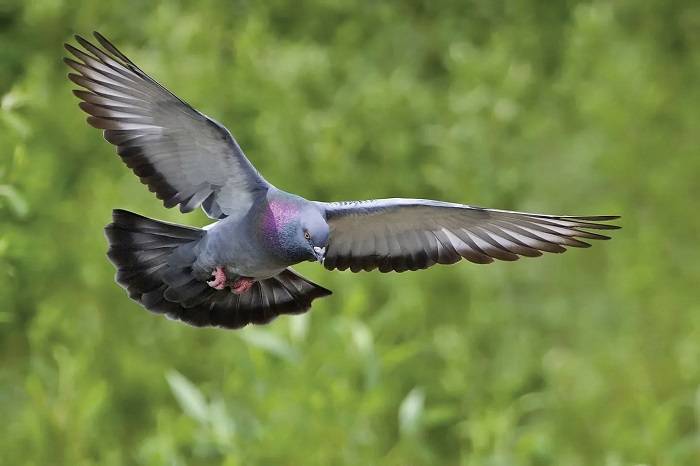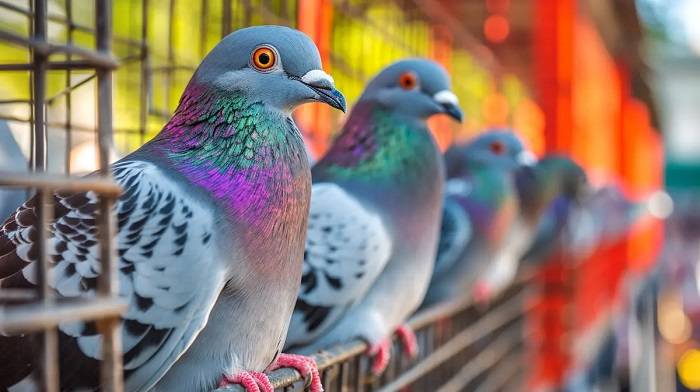Pigeons, often overlooked and underestimated, are remarkable avian creatures that have coexisted with humans for centuries, adapting to diverse environments and thriving in urban landscapes around the world. Despite their ubiquitous presence, many people are unaware of the fascinating intricacies of pigeon biology, including their wide range of sizes and weights. In this comprehensive blog post, we delve into the captivating world of pigeon weights, exploring the factors that influence their size, the variability among different pigeon breeds, and the significance of their weight in various contexts.
The Diversity of Pigeon Breeds: From Dainty Doves to Sturdy Rock Pigeons
Pigeons encompass a diverse array of breeds, each with its own unique characteristics, including size, shape, coloration, and behavior. From the delicate fantail pigeon with its elegant plume of tail feathers to the sturdy rock pigeon, commonly found in urban environments, pigeon breeds exhibit remarkable variability in size and weight.
- Rock Pigeons (Columba livia): The ubiquitous rock pigeon, also known as the common pigeon or city pigeon, is perhaps the most familiar and widespread pigeon species worldwide. Rock pigeons are medium-sized birds with stout bodies, short legs, and relatively broad wings. While individual weights can vary depending on factors such as age, sex, and geographic location, adult rock pigeons typically weigh between 9 to 13 ounces (255 to 369 grams).
- Homing Pigeons (Columba livia domestica): Homing pigeons, a domesticated variety of rock pigeons, are bred and trained for their exceptional navigational abilities and homing instincts. These birds are slightly smaller and lighter than wild rock pigeons, with adult weights ranging from 8 to 12 ounces (227 to 340 grams). Despite their diminutive size, homing pigeons are capable of remarkable feats of endurance and navigation, making them invaluable companions for long-distance racing and messaging.
- Giant Runts: At the other end of the spectrum are breeds like the Giant Runt, a large and imposing pigeon breed known for its impressive size and muscular build. Adult Giant Runts can weigh upwards of 30 ounces (850 grams) or more, making them one of the heaviest pigeon breeds in existence. Despite their substantial size, Giant Runts are prized for their gentle disposition and striking appearance, with a distinctive crest of feathers on their heads.
Factors Influencing Pigeon Weight: Genetic, Environmental, and Nutritional Considerations
- Genetics: Like all living organisms, pigeon weight is influenced to a significant extent by genetic factors inherited from their parents. Breeding practices, including selective breeding for specific traits such as size, color, and conformation, can result in considerable variability in pigeon weights among different breeds and individual birds within a breed.
- Environmental Conditions: Environmental factors, including climate, habitat quality, and food availability, can also impact pigeon weight and overall health. Pigeons living in urban environments may have access to a diverse range of food sources, including human-provided food scraps and bird feeders, which can contribute to variations in weight compared to their wild counterparts living in more natural habitats.
- Nutritional Status: Adequate nutrition is essential for maintaining optimal pigeon health and body condition. Pigeons require a balanced diet that includes a variety of grains, seeds, fruits, and vegetables to meet their nutritional needs. Malnutrition or deficiencies in essential nutrients can result in stunted growth, poor feather quality, and reduced resistance to disease, affecting overall weight and well-being.
Weighing Pigeons: Methods and Considerations
- Scale Weighing: The most accurate method for determining a pigeon’s weight is to use a precision scale designed for small animals. Place the pigeon gently on the scale, ensuring that it is calm and relaxed, and record the weight in ounces or grams. Regular weighing can help monitor changes in weight over time and detect any fluctuations that may indicate health issues or nutritional deficiencies.
- Hand-Feeding and Handling: Experienced pigeon fanciers and breeders often develop a keen sense of a pigeon’s weight through regular handling and observation. By gently palpating the breast muscles and feeling the bird’s overall body condition, experienced individuals can assess whether a pigeon is underweight, overweight, or in optimal condition.
- Visual Assessment: While visual assessment alone is not as precise as scale weighing, it can provide valuable insights into a pigeon’s overall body condition and weight. Look for signs of excessive thinness or emaciation, such as prominent keel bones and visible loss of muscle mass, as well as indications of obesity, such as a distended abdomen and difficulty flying or moving.
The Weighty World of Pigeons
- Racing Pigeons: In the world of pigeon racing, where speed and endurance are paramount, the weight of racing pigeons can have significant implications for performance. Pigeon fanciers carefully monitor the weights of their racing pigeons and adjust their diet and training regimen accordingly to optimize their chances of success in competitive racing events.
- Breeding and Exhibition: Pigeon breeders and fanciers often place importance on achieving and maintaining ideal weights in breeding stock and show pigeons. Breeding pairs are selected based on a combination of factors, including size, conformation, and overall health, with the goal of producing offspring that meet breed standards and exhibit desirable traits.
- Symbolic Associations: In addition to their practical significance, pigeon weights may also carry symbolic associations in cultural and spiritual contexts. Pigeons have long been revered as symbols of peace, freedom, and resilience in various cultures around the world, with their weight representing a balance between earthly grounding and spiritual elevation.
Related Post:
At What Age Do Ducks Start Laying Eggs? (The Truth)
Explore the Grace and Elegance of American Pekin Ducks
Exploring the Kaleidoscope of Call Duck Colors
Pigeons are remarkable birds that come in a wide range of sizes and weights, reflecting the remarkable diversity of avian life on our planet. From the sturdy rock pigeons that populate urban landscapes to the majestic Giant Runts prized for their impressive size, pigeons captivate our imaginations with their beauty, grace, and adaptability. By understanding the factors that influence pigeon weight, from genetics and environmental conditions to nutritional considerations and cultural significance, we gain a deeper appreciation for these remarkable avian companions and the important roles they play in our lives and in the natural world. So the next time you encounter a pigeon perched on a city street or soaring gracefully overhead, take a moment to marvel at the weighty wonders of these extraordinary birds and the rich tapestry of life they represent.




